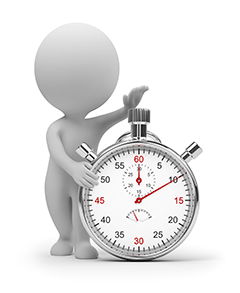 The first and the foremost question that your web design clients put up is “how much would it cost like?”. This straight forward question runs down the chill for both — the designer as well as the client. This simple and straight forward question is in fact quite complicated for the designer to answer and hard for the client to accept.
The first and the foremost question that your web design clients put up is “how much would it cost like?”. This straight forward question runs down the chill for both — the designer as well as the client. This simple and straight forward question is in fact quite complicated for the designer to answer and hard for the client to accept.
The design is actually the outcome of creativity, thought, consultation, planning and a host of other things. And quoting a web design cost for the designer requires the systematic breakdown of design services he will be offering. It requires a thorough analysis of the design requirements inclusive of time and effort invested on gathering the client’s requirements. Right from the inception of the design plan to final delivery of the website packed with the bells and whistles — all the inputs are chargeable. From the designer’s perspective, it is fair enough to charge for all the time and effort spent on giving shape to the final design which is approved by the client.

Then comes the client’s story. The client’s perspective about the web design is more like a viewer in the art gallery. He can appreciate the aesthetics and visual appeal of the artistic presentation but cannot determine the hardships that goes into making the art-piece a reality. It is thus quite common that without actually understanding the design process, the client gets overwhelmed by the total cost of the project.
The client views the website as just about any other advertising, marketing and promotion tool. But somehow overlooks the fact that the having a website is one time expense which reaps fruits in the long-term. The website helps in building the online identity as an ongoing process. And the capitalization just works.
Breaking the ice with your client in this manner, i.e. educating the client about the complexities of the design process and long-term benefits of owning the website lets the ball rolling in your court. Get ready to strike a profitable deal with your clients. The calculator offered by Freelance Switch can help you get an idea about the desired quote — the cost which pays off your expenses and offers “value for money” experience to your client.

However the reality about pricing the design services is that there is no fixed formula to arrive at the desired price. You have to consider a number of factors and answer a host of questions to finally arrive at the quote which affects your own outlook on your services and impacts your client’s opinion on your services. Here are some of the most important factors and questions you should ask yourself in order to arrive at the pleasing yet paying off quote.
7 Factors To Consider For Quoting A Price
Deciding on how much to charge for services is not an easy task. Here are 7 factors followed by 10 questions which will help you in determining a fair price for you as well as your clients.
- Your Client’s Budget: Always assess your client’s budget first. It saves you from both the possible loses — losing client by overcharging and losing profits by undercharging. Charge your services depending on how much your client is willing to spend.
- The Time It Will Take:

Time is money Time is money goes well with all the creative processes. Especially after reaching the level of expertise in the web design field, your new projects and assignments start costing you in terms of time more than money. If the project at hand will take twice as much time for a simple project, feel free to reflect your engagement through your prices.
- Skills Needed For The Project: Assess the worth of your skills and charge accordingly. If the website demands some specific utility functions to be coded in the functions.php or requires you to check for the plugin compatibility, don’t forget to include such customization charges in your quotation.
- Your Experience: Your experience serves as the savoir for your client. It assures your client that in case something goes wrong you will act as “Mr Fix It” and settle the problems without panic.
- Type Of Client: The pricing mechanism rests heavily on the type of client you are dealing with. If you have a designer as your client, lowering the price slab makes room for future transactions while one time clients having flexible budget is an indicator for raising your prices.
- The Quality Of Services You Offer: Offering pixel perfect design, standards-compliant code and round the hour services in case of some possible damage goes a long way in establishing your credibility as a designer. Let your commitment and professionalism reflect in your prices.
- Your Profit: Last but not the least, you will need to re-examine your prices to make sure you are not undercharging the client. Set the quote in such a way that is completely covers your cost and pays appropriately for the time and effort invested by you.
10 Questions To Ask Yourself To Decide “How Much Should I Charge?”

Design as we speak in case of a web design project is not confined to graphic design alone. It is inclusive of all the services you offer right from taking up the project to launching the website. It may include just the blog design or at other times it may call for a complete re-design, customization, plugin compatibility, logo design and at times inclusion of some specific utility functions. The very nature of the design process makes it difficult to profess standard charges. Here are 10 questions you need to ask yourself to answer this flexible question.
- How badly do you want the project?
- How much is your client willing to float?
- What are the exact project specifications the particular client has provided?
- What is the level of complexity involved in this process — simple, complicated, requires expertise?
- What is everyone else charging?
- Whom are you offering the services to — a designer or a layman?
- How much time will it take to complete the project?
- Do you have time for the new project?
- Where do you stand in terms of experience and technical expertise in your field?
- What do you feel the final project will be worth?
Additional Resources
